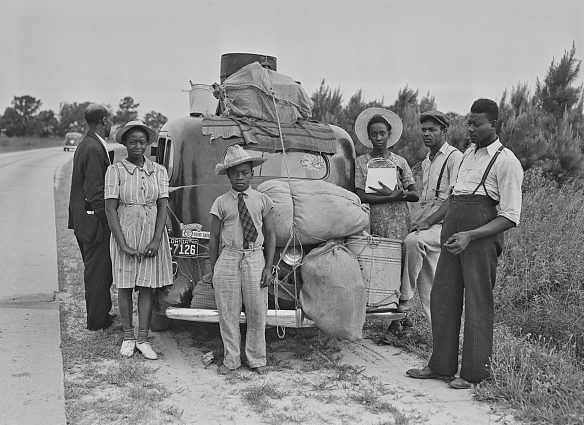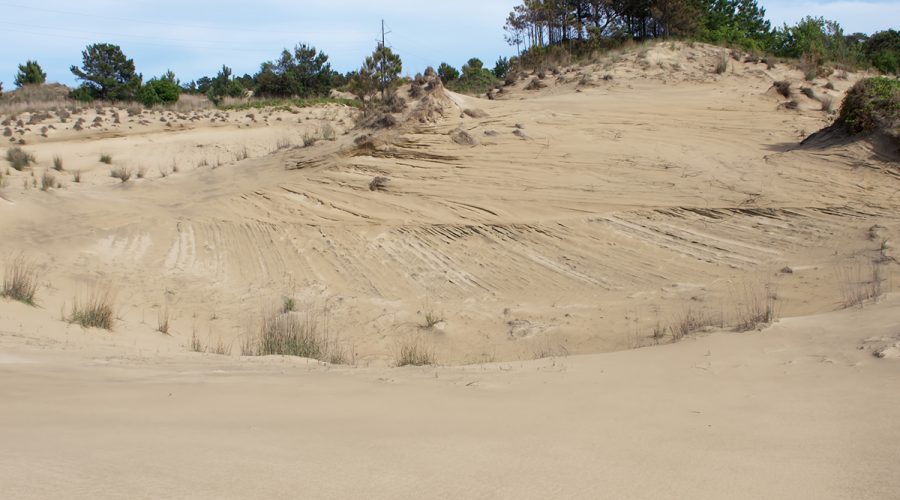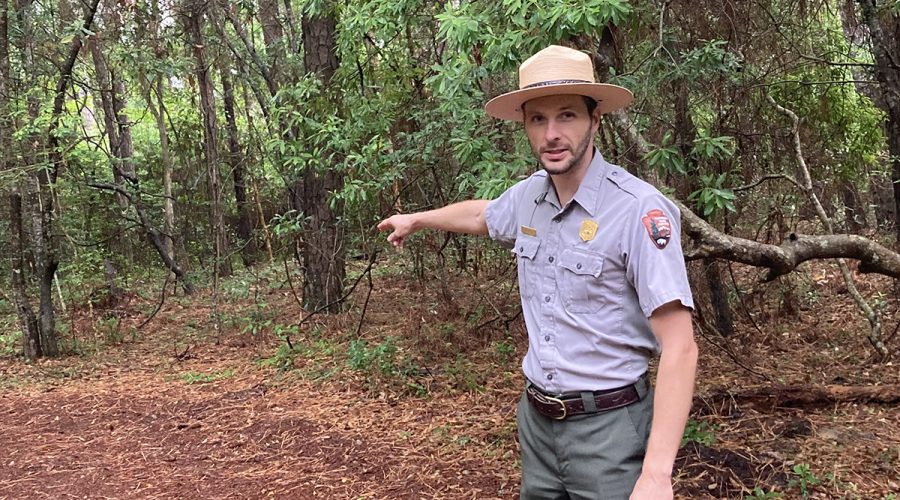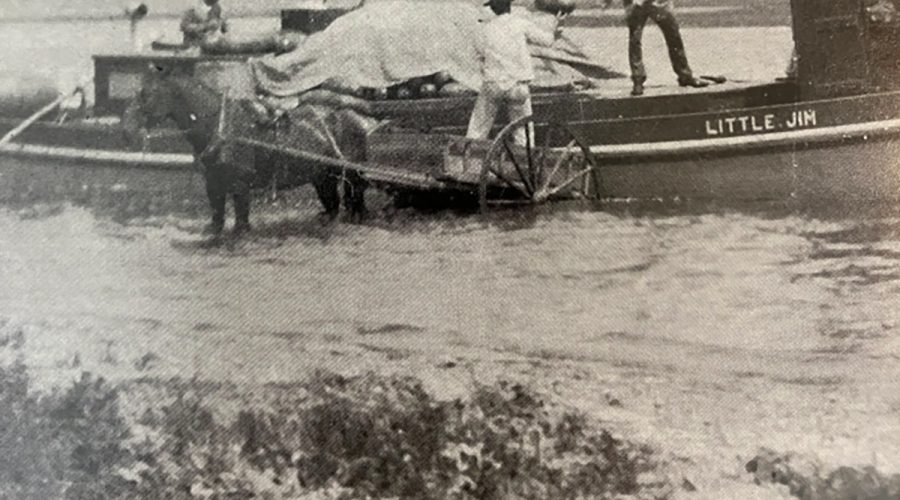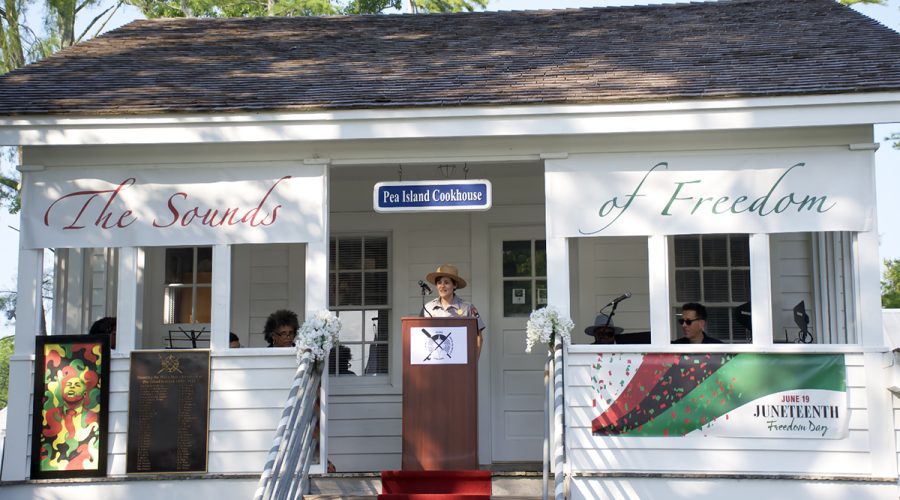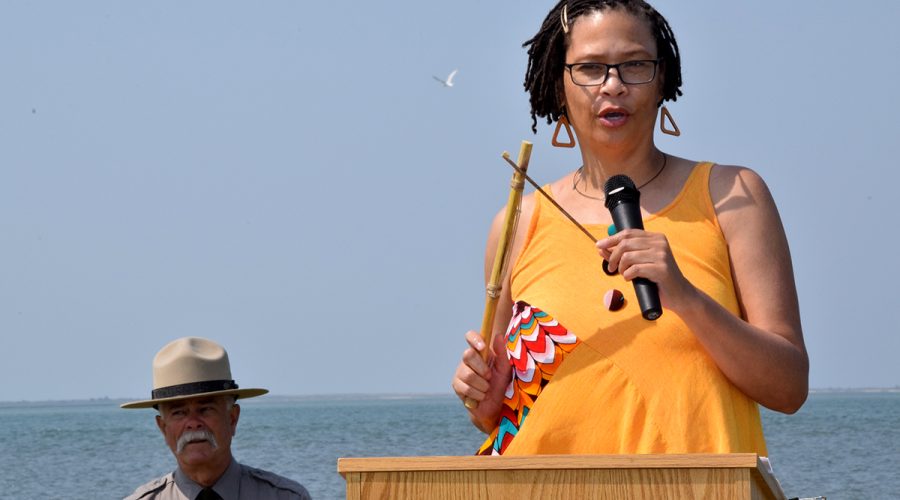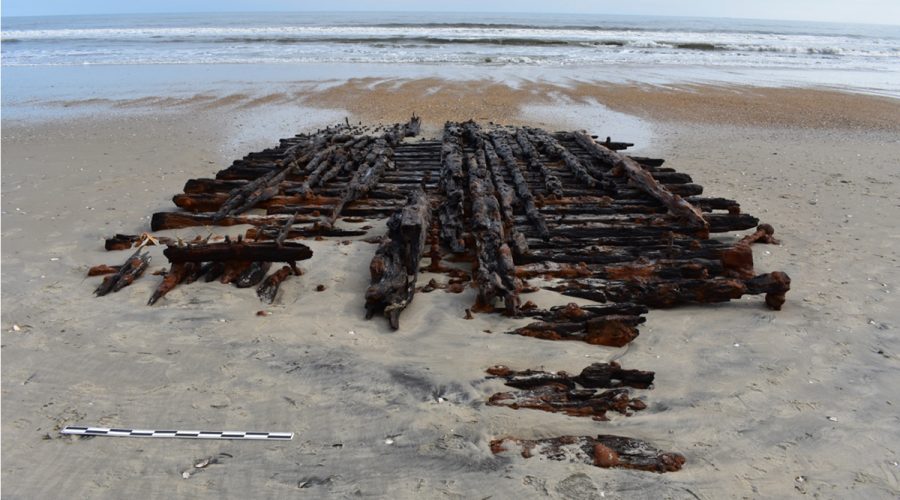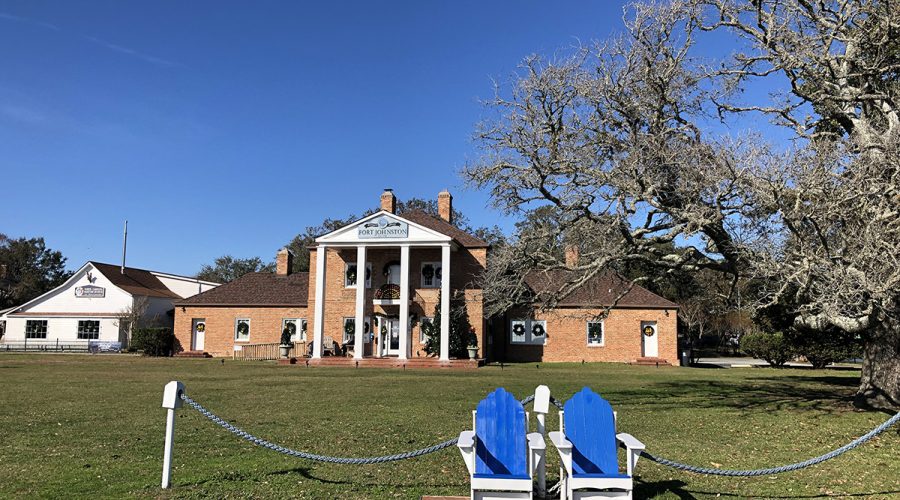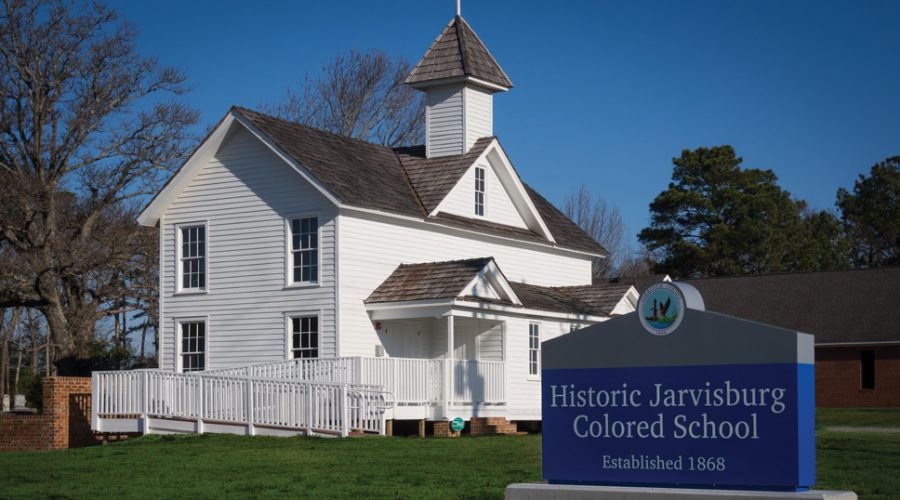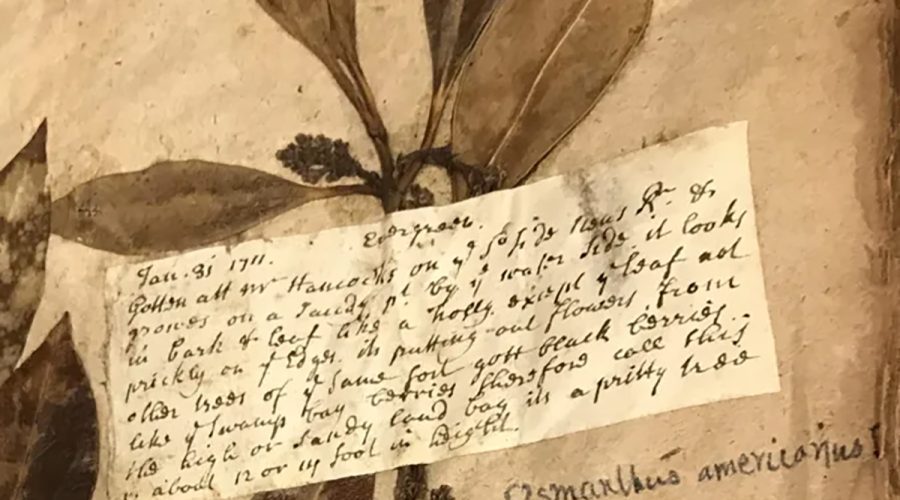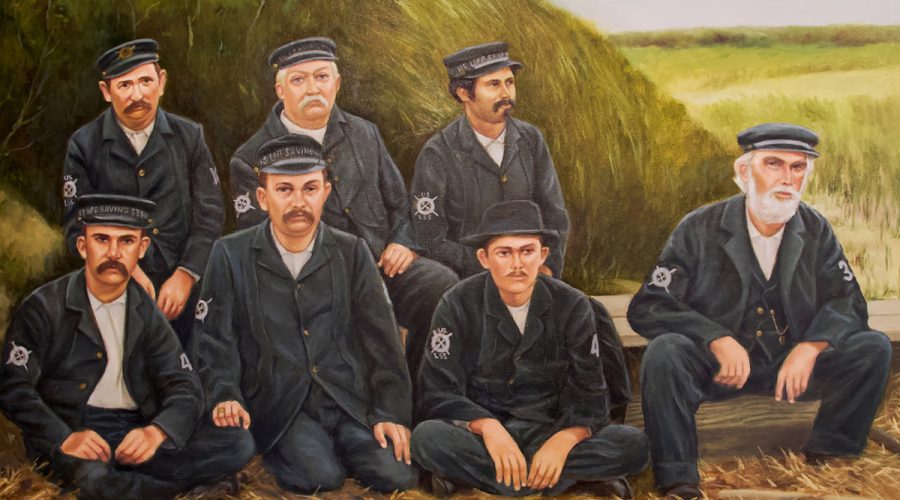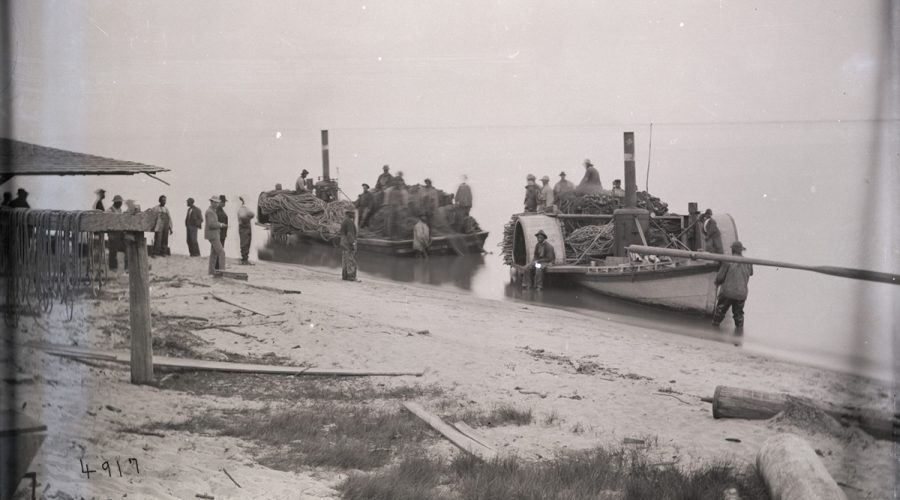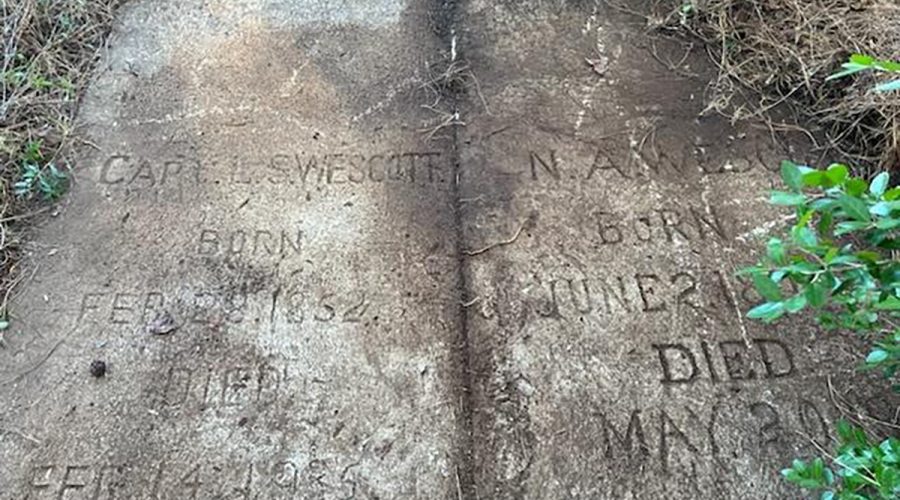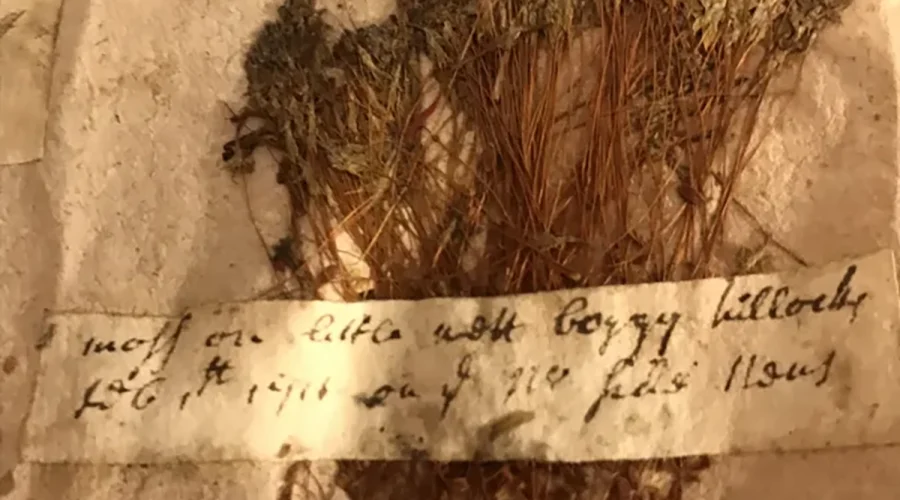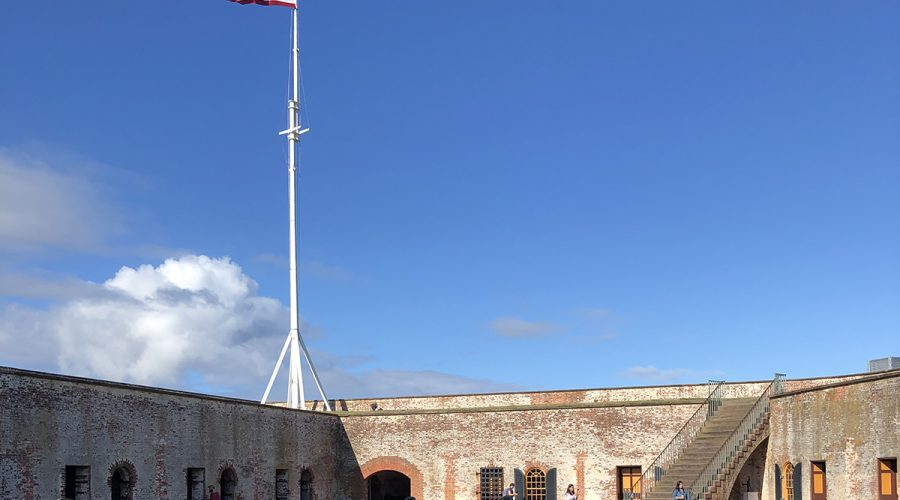Historian David Cecelski discovers a chapter in eastern NC’s history about the migrant farm workers that harvested crops in the 1930s and ’40s while exploring Farm Security Administration photographs at the Library of Congress.
Culture & History
The sand waves of Hatteras: ‘on a mission of death’
After adventurous New York journalist John Randolph Spears undertook to visit Cape Hatteras in spring 1890, he wrote of miles and miles of deadly sand waves that threatened to swallow islanders and their homes.
Details emerge on plans for Fort Raleigh’s interpretive trail
The seven exhibits along the Freedom Trail will interpret various aspects of the Black experience on Roanoke Island.
At the Boundary between Land and Sea: Coastal life in 1909
Historian David Cecelski examines the story behind a July 1909 image of men loading watermelons onto a freight boat from the Bogue Sound shore.
Planned interpretive trail to tell Freedmen’s Colony story
A glimpse into the Civil War-era Freedmen’s Colony experience may soon be brought to life thanks to a planned Fort Raleigh National Historic Site project.
Event marks Portsmouth Village’s role in Middle Passage
Those who spoke during a ceremony held Saturday to dedicate markers designating Portsmouth as a port of entry for captive Africans said recognizing our troubled past can bring understanding, hope.
Analysis finds wreck on Currituck Beach may be Metropolis
East Carolina University researcher Matthew Pawelski used computer modeling and imaging to make precise comparisons of wreckage and known details of a lost former Civil War naval vessel refitted commercial use.
From pivotal beginnings, Brunswick County history lives on
While the southernmost county on the North Carolina coast shares features similar to other coastal counties, its historic destinations, charming towns and recent rapid growth help make it unique.
Northeast NC trail connects African American history
A quest to drive visitors to the Historic Jarvisburg Colored School Museum has led to the creation of the nine-county African American Experience of Northeast North Carolina trail.
Search for Lawson in natural history museum continues
Historian David Cecelski continues about his visit to the Natural History Museum in London to study specimens of coastal North Carolina flora that John Lawson sent to English naturalist James Petiver in the early 1700s.
Nags Head artist honors ‘checkerboard’ lifesaving crews
A recently unveiled painting depicts one of the “checkerboard” crews of the U.S. Life-Saving Service staffed by both Black and white members during the late 19th and early 20th century.
Salmon Creek seines: Shad, herring fisheries were once big
The historically significant site once saw significant river herring and shad fishing, back-breaking work done almost exclusively by enslaved and free Black laborers.
Landowners find Black lifesaving hero’s forgotten grave
Retired Coast Guard Cmdr. Gavin Wente and his wife Renee didn’t know when they bought their property last year that it included the unrecorded gravesite of Capt. Lewis Wescott, who participated in one of the most daring ocean rescues in Outer Banks history.
Searching for Lawson in London’s Natural History Museum
Historian David Cecelski recounts his visit to the Natural History Museum in London, which holds the specimens of coastal North Carolina flora that John Lawson sent to English naturalist James Petiver in the early 1700s.
ECSU Choir marks 90 years of bringing music to the people
The Elizabeth City State University Choir, which performed recently at First Flight High School in Kill Devil Hills, has been sharing its songs with audiences across the region since 1933.
Carteret County’s history, amenities have long lured
In our county history series: Colonial beginnings, Civil War battles, maritime industry, fishing, tourism and coastal living among Carteret’s numerous draws.

